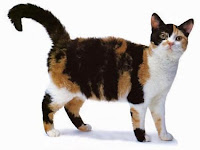Cat Personality
 Wirehairs are cat people, eager to human attention and love. They are active, not over, and affectionate without being stuck. They showed keen interest in their surroundings, in every aspect of your day of participation, with a room with you from room to keep the proceedings in the eye. Fanciers say, they seem particularly with their families feel out place, and try to give comfort and companionship of family members when they choose to feel blue. When they opened the rolling, sitting around them, to give support.
Wirehairs are cat people, eager to human attention and love. They are active, not over, and affectionate without being stuck. They showed keen interest in their surroundings, in every aspect of your day of participation, with a room with you from room to keep the proceedings in the eye. Fanciers say, they seem particularly with their families feel out place, and try to give comfort and companionship of family members when they choose to feel blue. When they opened the rolling, sitting around them, to give support.Such as cats, Wirehairs have a real sense of humor, like to be the center of attention. Agile and fun-loving, they like to play the clown, generally more playful than the American Shorthair and positive.
Cat Breed Traits
 The fur is different from the Cornish Rex coat in the Wirehair has all three hair types. Even the Wirehair gene dominant, unlike the Cornish and Devon Rex, recessive genes. The Wirehair the hairs crimped, hooked, or bent, resulting in a thick, elastic layer, which leads to the ringlet formation and not waves. Breeders British geneticist Roy Robinson sent samples of hair and he concluded that all three types of hairs (down, awn, and guard) twisted. Currently, there are significant differences in texture and length of the individual layers. The most preferred coat is short, very tight and rough grip.
The fur is different from the Cornish Rex coat in the Wirehair has all three hair types. Even the Wirehair gene dominant, unlike the Cornish and Devon Rex, recessive genes. The Wirehair the hairs crimped, hooked, or bent, resulting in a thick, elastic layer, which leads to the ringlet formation and not waves. Breeders British geneticist Roy Robinson sent samples of hair and he concluded that all three types of hairs (down, awn, and guard) twisted. Currently, there are significant differences in texture and length of the individual layers. The most preferred coat is short, very tight and rough grip.History - The American Wirehair Cat Breed?
Like the American Curl breed, the Wirehair started as a spontaneous mutation in the domestic cat population. In 1966 breeder Joan O'Shea acquired from a small farm in upstate New York a kitten that was 'just a hair different'. As a breeder of Rex breeds, O'Shea recognized that the scruffy-looking red and white bicolor male kitten might represent a new breed of cat.Council Rock Farm Adam of Hi-Fi, the kitten's given name, was later bred to the neighbor's straight-coated cat, which also had come from the farm. The breeding produced two more Wirehairs, which O'Shea bought and named Abby and Amy.
O'Shea sold Amy to Rex breeders Bill and Madeline Beck, who became instrumental in helping the breed achieve notice in the cat fancy. Amy gave birth to a number of Wirehairs, including a cat named Barberry Ellen, the first homozygous Wirehair to be born.
In 1967 the Becks petitioned the CFA to accept Wirehairs for registration. The petition was granted. The breed went on to achieve CFA Championship status in 1978.
Since the breed sprang from the domestic cat population, O'Shea felt that the standard should reflect the American Shorthair's conformation with a specific standard written for the coat. Since then, the standards have changed slightly to reflect changes that appeared in subsequent litters.
O'Shea stopped working with the breed around 1970; the Becks did not work with the breed for much longer, either. Since then, a handful of breeders, judges, and exhibitors have kept the Wirehair breed going, and have also worked to improve the original body style by selectively breeding for a more American Shorthair type. Currently, the numbers are limited. In 1995 only 74 Wirehairs were registered with the CFA. Waiting lists can be long and prices high.
While the breed seems to be entirely 'made in America', research indicates that the mutation may have occurred before. Cats with coats similar to the Wirehair apparently were seen in derelict bomb sites in London after World War II. Two of these cats were apparently exhibited in the pet category at the National Cat Club show in Britain two years before the Wirehair appeared on the American scene. Whether the American Wirehair somehow comes from the same gene pool or if these were two similar spontaneous mutations that took place in two different areas of the world is something we may never know.
Copyright © 1998 by Barron's Educational Series, Inc. based on
ENCYCLOPEDIA OF CAT BREEDS by J. Anne Helgren.
ENCYCLOPEDIA OF CAT BREEDS by J. Anne Helgren.
No comments:
Post a Comment